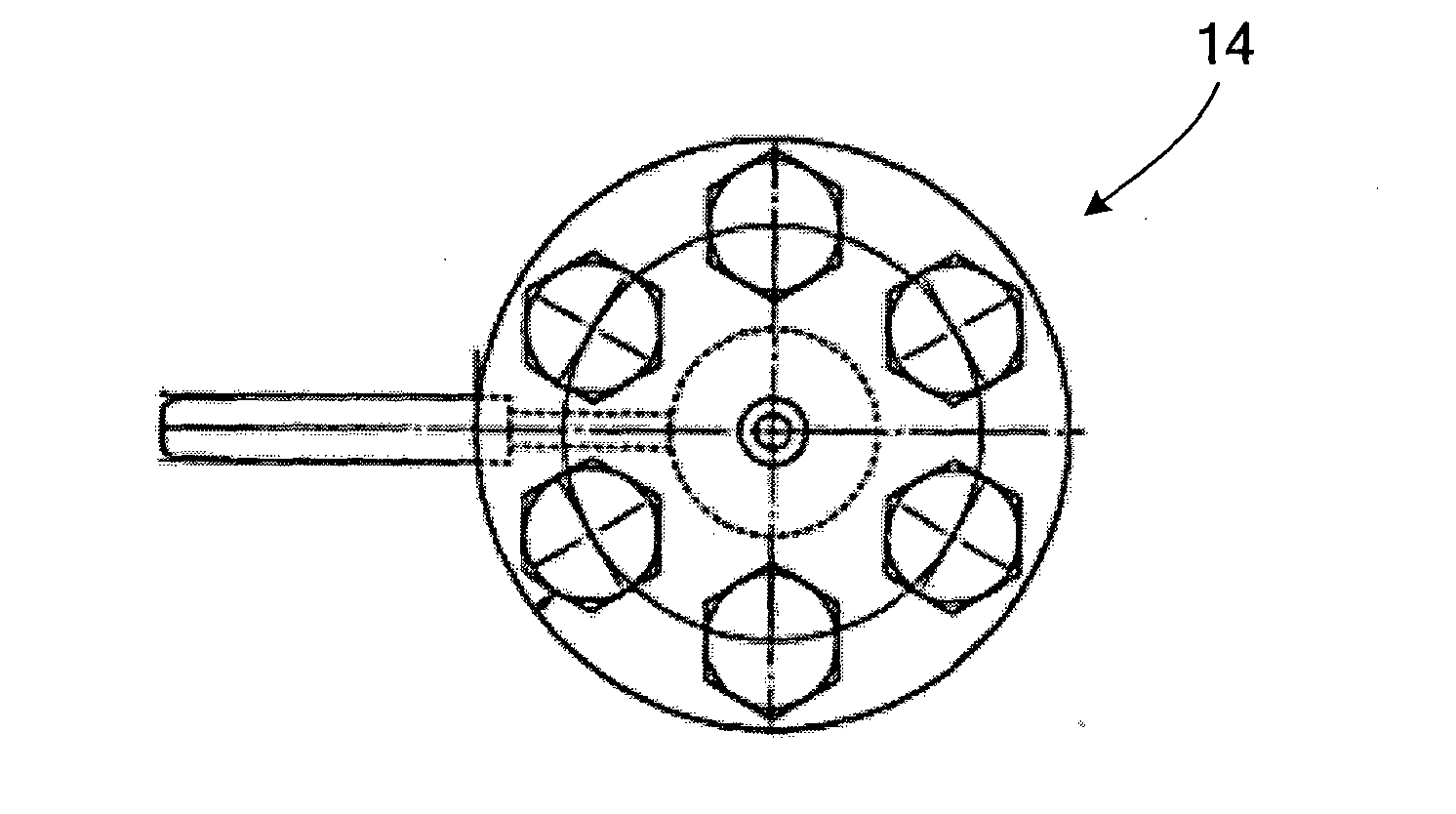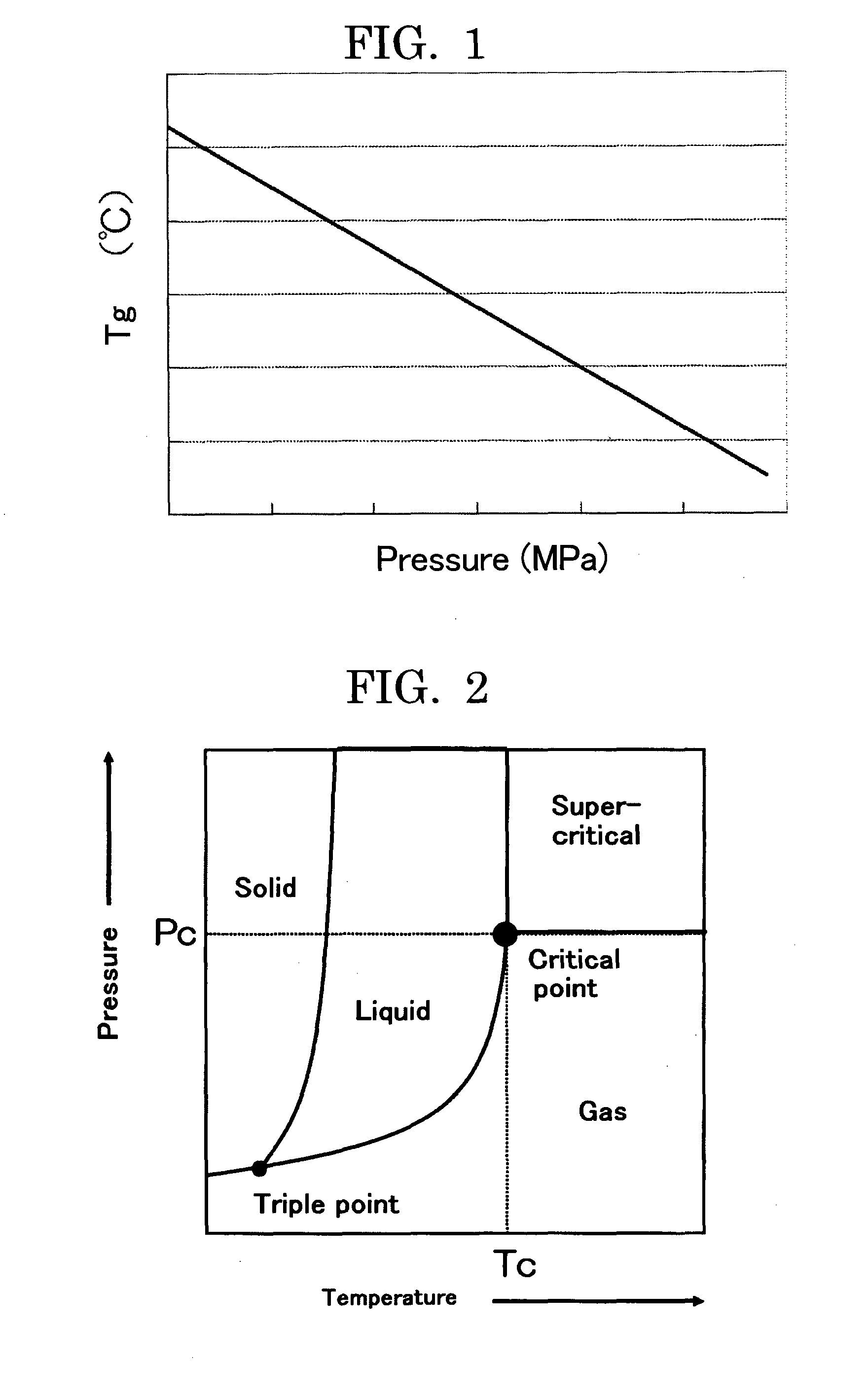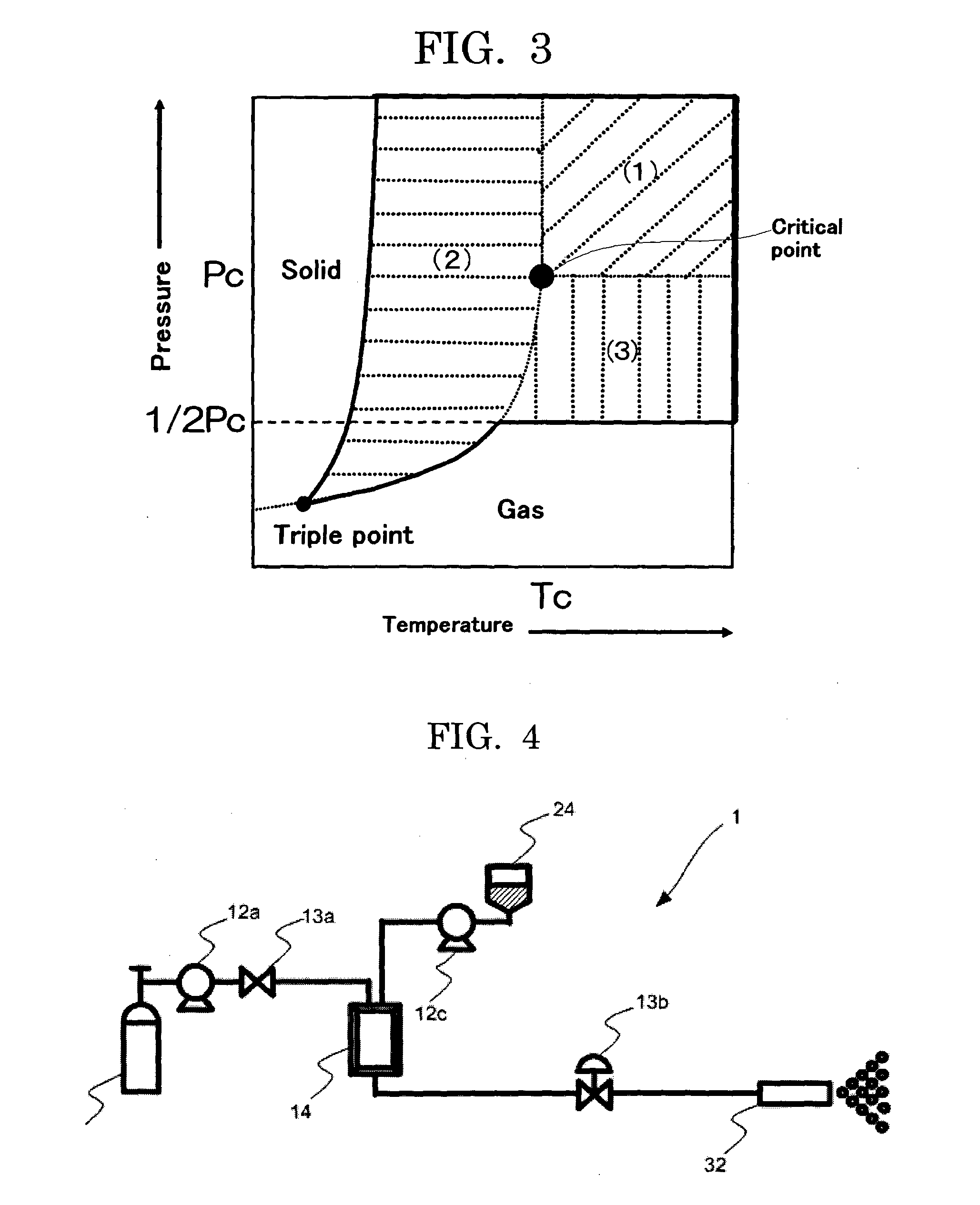Method for producing particles and apparatus for producing particles
- Summary
- Abstract
- Description
- Claims
- Application Information
AI Technical Summary
Benefits of technology
Problems solved by technology
Method used
Image
Examples
synthesis example 1
Synthesis of Polyester Resin 1 (Pressure Plastic Material)
[0126]A reaction vessel equipped with a cooling tube, a stirrer, and a nitrogen inlet tube was charged with 229 parts of a bisphenol A ethylene oxide (2 mol) adduct, 529 parts of a bisphenol A propylene oxide (3 mol) adduct, 208 parts, of terephthalic acid, 46 parts of adipic acid, and 2 parts of dibutyl tin oxide, and the mixture was allowed to react for 8 hours at 230° C. under the atmospheric pressure. The resultant was further allowed to react for 5 hours under the reduced pressure of 10 mmHg to 15 mmHg. Thereafter, 44 parts of trimellitic anhydride was added to the reaction vessel, and the resulting mixture was allowed to react for 2 hours at 180° C. under the atmospheric pressure to thereby yield Polyester Resin 1.
[0127]Polyester Resin 1 had the number average molecular weight of 2,500, weight average molecular weight of 6,700, glass transition temperature (Tg) of 43° C., and acid value of 25 mgKOH / g. The gradient of th...
example 1
[0129]Color particles were produced by means of an apparatus for producing particles, 1, illustrated in FIG. 4. In Example 1, a compressive fluid was obtained by heating and compressing carbon dioxide stored in the bomb 11.
[0130]
Polyester Resin 195 parts by massColorant (copper phthalocyanine blue, C.I. Pigment 5 parts by massBlue 15:3, manufactured by Dainichiseika Color andChemicals Mfg. Co., Ltd.)
[0131]After mixing the raw materials of color particles by a mixer, the mixture was melt-kneaded by a two-roll mill, and the kneaded product was rolled and cooled. This melt-kneaded product was provided to a pressure tank equipped with a thermoregulator 24 of the apparatus for producing particles 1 illustrated in FIG. 4, and was heated and melted at 120° C. The melt-kneaded product, which had been heated and melted, was supplied into the multistage split flow micromixer 14 illustrated in FIGS. 6A to 6D by pressurizing by a pump 12c, and at the same time, carbon dioxide as a supercritical...
PUM
| Property | Measurement | Unit |
|---|---|---|
| Viscosity | aaaaa | aaaaa |
| Dynamic viscosity | aaaaa | aaaaa |
| Pressure | aaaaa | aaaaa |
Abstract
Description
Claims
Application Information
 Login to View More
Login to View More - R&D
- Intellectual Property
- Life Sciences
- Materials
- Tech Scout
- Unparalleled Data Quality
- Higher Quality Content
- 60% Fewer Hallucinations
Browse by: Latest US Patents, China's latest patents, Technical Efficacy Thesaurus, Application Domain, Technology Topic, Popular Technical Reports.
© 2025 PatSnap. All rights reserved.Legal|Privacy policy|Modern Slavery Act Transparency Statement|Sitemap|About US| Contact US: help@patsnap.com



